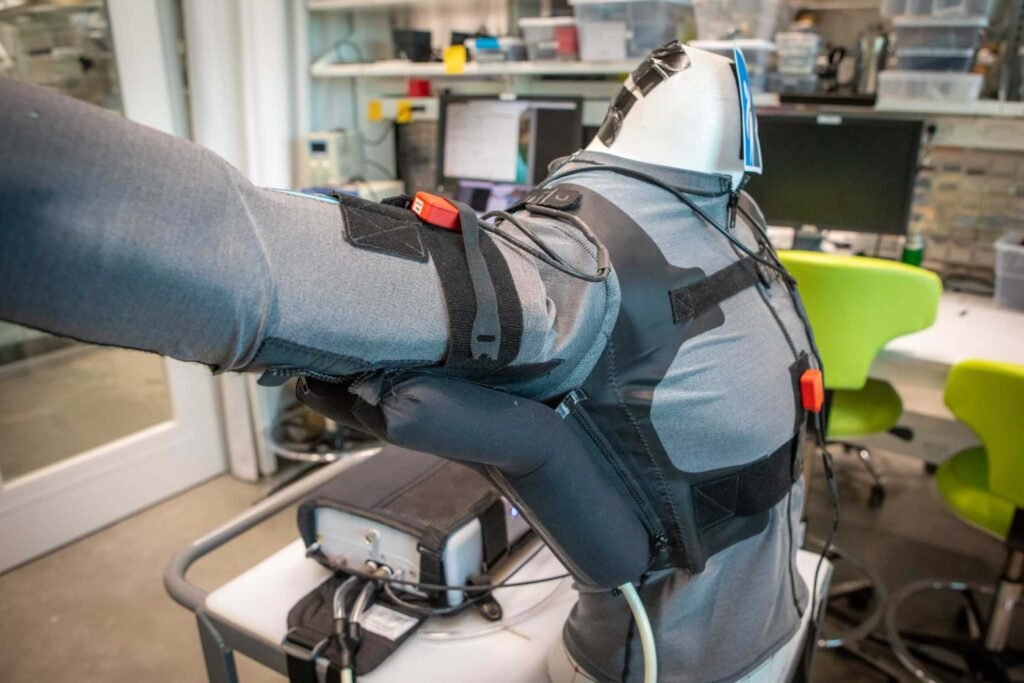Harvard University researchers have developed a soft, wearable robotic device that adapts to the unique movement patterns of individuals with upper-limb impairments—such as those caused by stroke or ALS. This next-generation assistive robot uses machine learning and physics-based modeling to personalize support, helping users perform daily tasks like eating, brushing teeth, or drinking with greater ease and independence.
The device consists of a sensor-loaded vest and an inflatable balloon positioned under the arm. As the balloon inflates and deflates, it provides mechanical assistance to lift or lower the limb. What sets this version apart is its ability to learn from the user’s own movements. Sensors track motion and pressure, feeding data into a machine learning algorithm that predicts what the user is trying to do. A physics-based model then calculates the minimum pressure needed to support the arm naturally, allowing the robot to adjust its assistance in real time.
This dual-model approach solves a key problem in earlier versions: users often struggled to move their arms back down after robotic assistance lifted them. By combining predictive learning with biomechanical modeling, the robot now offers smoother, more intuitive support.
The system was tested with nine volunteers—five stroke survivors and four individuals with ALS. One participant, Kate Nycz, who has lived with ALS since 2018, described how the robot helped her regain some function in her dominant arm, which had become too weak for repetitive tasks. The robot distinguished her shoulder movements with 94% accuracy, demonstrating its potential for personalized rehabilitation.
Here’s a video from Harvard explaining more:
Article from Harvard University: A Wearable Robot That Learns
Abstract in Nature Communications: Personalized ML-based wearable robot control improves impaired arm function

